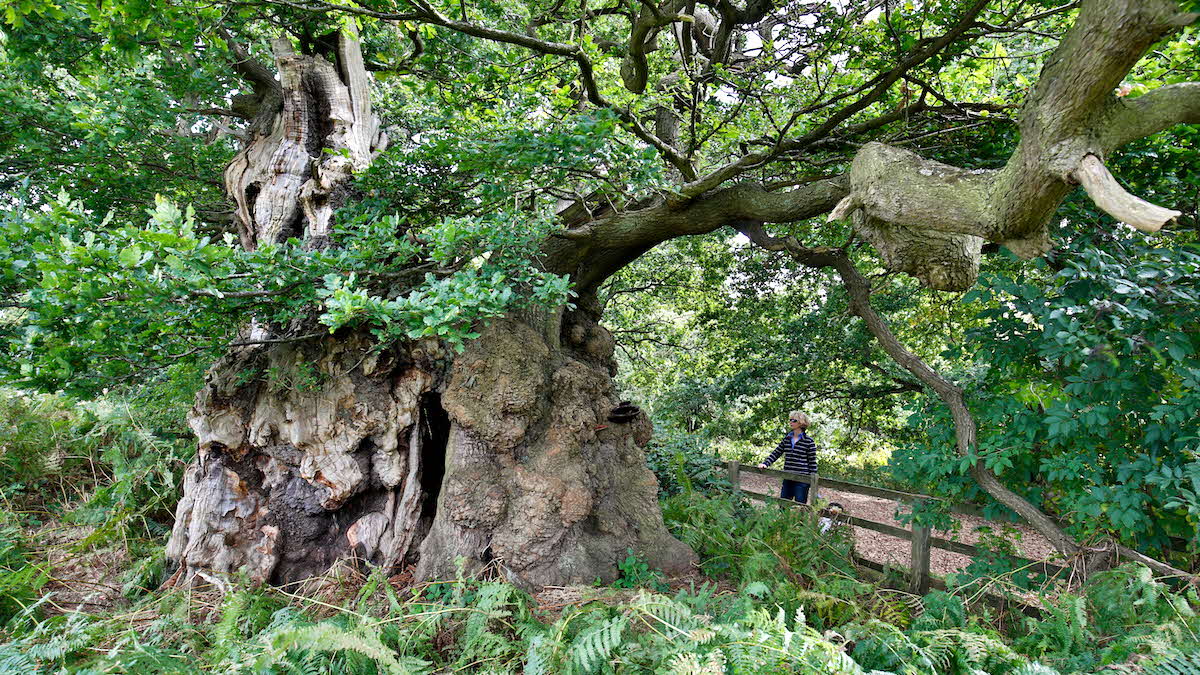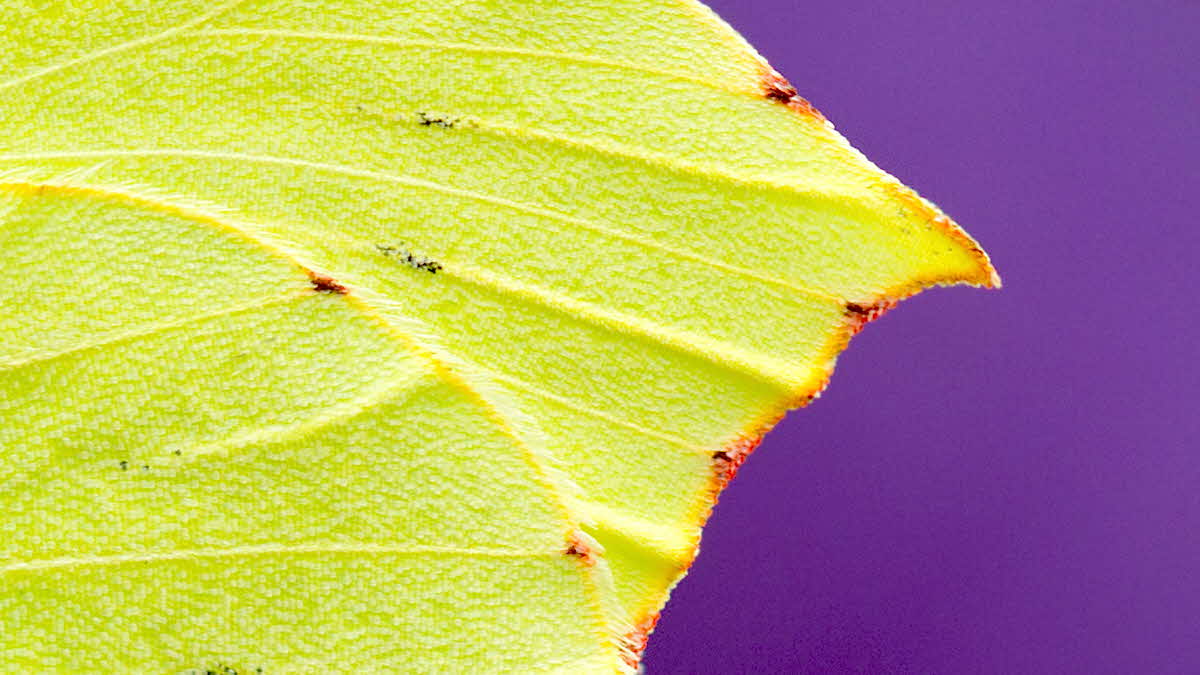Top nature campsites
You’ll be amazed at the variety of animals to spot on some of our Club campsites
View our top nature campsitesDavid Chapman marvels at the majestic oak tree and the organisms that call it home
 Ancient oak trees often feature massive holes and fissures, giving them character and amazing wildlife value
Ancient oak trees often feature massive holes and fissures, giving them character and amazing wildlife valueThe oak is known as the King of the Forest because of its significance to humans across the centuries. In Greek mythology it is sacred to Zeus, king of the gods; Vikings associated the oak with Thor, the god of thunder; and Celts performed religious rites close to oak trees, which they referred to as ‘duirs’ – this is how druids got their name. One reason for this reverence might come from the ability of the oak tree to survive and recover from lightning strikes, which were likely interpreted as messages from the gods.
More practically, oak has always been highly prized for its strength as a building material. Vikings made their ships from oak, and Admiral Nelson’s HMS Victory was constructed using timber from about 6,000 oak trees. Oak has also historically been used in buildings; more than 2,600 tonnes went into building Salisbury Cathedral, some of it shipped in from Ireland. Those same oak beams, which came from trees felled in 1222, are still doing their job today.
The UK has several introduced species of oak, but only two that are native: the pedunculate (or English) oak and the sessile oak. In this context, ‘peduncle’ is a stalk and ‘sessile’ means ‘without a stalk’. Pedunculate oaks feature acorns with long stalks and leaves with very short stalks and bulbous ‘earlobes’, two of which sit at the base of the leaf. Sessile acorns have no stalk, but the leaves have long stalks; the leaves do not have pronounced ‘earlobes’ and are more ragged in appearance.
 A grey squirrel collects an acorn
A grey squirrel collects an acornBoth species grow on a massive scale and to an incredible old age. It takes 100 or more years for an oak tree to reach maturity and it may continue to thrive until it reaches old age at about 700 years. Over the subsequent few centuries the tree will diminish and lose branches, but its value to wildlife might continue for more than a millennium. Britain’s oldest oak tree is the Bowthorpe Oak in Lincolnshire, which is thought to be over 1,000 years old.
The beauty of an oak tree is in its shape; stand back and admire the strength in those boughs. A mature oak can reach 45 metres in height, but its spread can be even greater. Surprisingly, its roots are not always very deep, but they too spread over a huge distance, providing great stability. Its trunk can also reach epic proportions: the Majesty Oak in Kent has the biggest girth of any in Britain, its circumference measuring over 12 metres.
In order to obtain all the nutrients it needs, the oak tree has a symbiotic relationship with a network of mycorrhizal fungi in the soil: the tree supplies the fungi with carbohydrates and in return the fungi provide it with nutrients and water.
 Oak beauty moth
Oak beauty mothThese vast structures produce great bounties. Each year a typical mature oak, which might weigh 10 tonnes, will grow about 700,000 leaves, and in a good year will produce 10,000 acorns. In its lifetime that same oak tree might produce anything up to 10 million acorns.
It’s no surprise, then, that the oak tree provides a home and food for a number of other creatures. Recent research by the Centre for Ecology & Hydrology has found that more than 2,300 species use oak trees for some aspect of their lives, over 500 are highly dependent on oak trees and 326 of these are ‘obligate associates’, meaning they are completely dependent on the trees.
Among these creatures are more than 280 types of insect, including beetles, weevils, sawflies, ants, bees, moths and even butterflies. The oak beauty, scalloped oak, oak lutestring and oak rustic – the clue is in their names – are examples of moths who depend on oak trees, while the purple hairstreak is a species of butterfly that lives its entire life on oaks.
 Little owls will nest in holes in old oak trees
Little owls will nest in holes in old oak treesLook along the moss-clad branches on an older specimen and we might see lichens and ferns – the polypody fern is a classic example. Old trees have holes and crevices in which birds such as tawny owl, little owl, treecreeper, great spotted woodpecker, nuthatch and redstart nest. The acorns are eaten by a variety of creatures, from the jays and grey squirrels that collect and store them, to the badgers and deer that scoff them as soon as they fall to the ground.
Look closely at oak trees in autumn and you might find growths called galls. These are home to the larvae of some 30 species of gall wasp. The female wasps lay their eggs in the buds, leaves, flowers or roots of the tree and simultaneously inject a little growth hormone. This leads to the formation of the gall, and the grubs that hatch from the eggs develop inside it. Because other wasp species feed on gall wasp larvae, the galls often contain high concentrations of tannin, a distasteful substance which deters attackers. Marble galls are one of the easiest types to identify – they are the size and shape of a marble and are found on thin oak branches. These contain so much tannin that they have been used since Roman times to make ink for writing. Because of the ink’s permanence, many important documents were historically written in gall ink – the Magna Carta being just one example.
So, next time you are passing an oak tree, pause for a while and take a good look. Over time, that same tree might attract the attention of 40 generations of your family, and it will have a huge impact on the wildlife of the area. Feel its bark, embrace it, look closely at its many facets – and, most importantly, respect it – this is the king of all trees after all.
Every month I will show you a photo of something from the natural world. It might be part of a subject or a subject that is difficult to identify. All you have to do is figure out what it is! Here is this month’s photo – no clues, no prizes, it’s just for fun. (I will give you the answer next month but if you can’t wait, see the Digital Magazine.)

The subject of August’s mystery photo was: a kingfisher